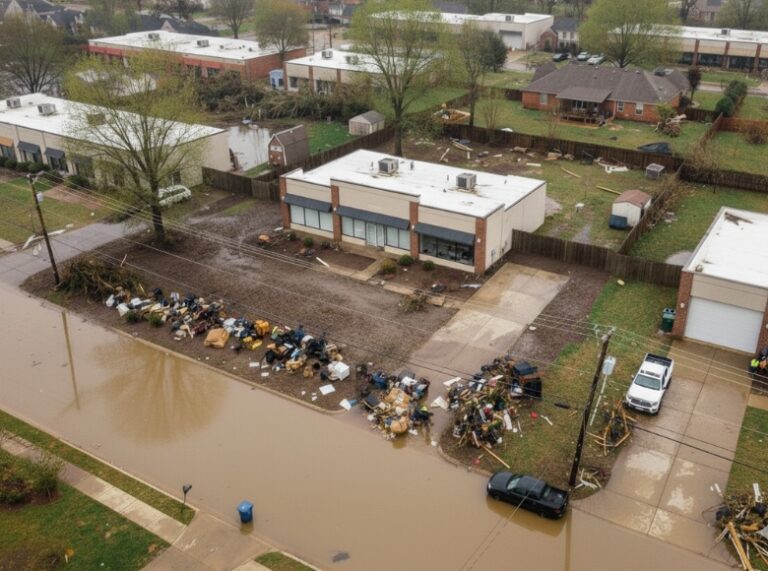Floods can strike suddenly, sweeping away homes, businesses, and irreplaceable possessions in mere hours. When disaster hits, filing a flood insurance claim quickly becomes critical to recovering financial losses. Even short delays can reduce reimbursements, complicate documentation, and prolong disruptions to daily life or business operations. Proper preparation and strategic action ensure claims proceed smoothly, maximizing the value of affected property and minimizing stress.
A successful flood insurance claim requires careful documentation, organized records, and a clear understanding of policy coverage. Adjusters, inspectors, and contractors rely on timely access to evidence such as photos, receipts, and serial numbers. Filing promptly and thoroughly not only accelerates the insurer’s response but also ensures settlements reflect the full scope of losses. By understanding the policy, recording damage accurately, and keeping organized records, unnecessary delays can be avoided.
Why Filing a Flood Insurance Claim Early Matters
Timing is crucial when filing a flood insurance claim. Insurers often prioritize early claims, assigning adjusters quickly if documentation is complete. Immediate filing preserves crucial evidence, such as water-damaged walls, warped flooring, or structural damage that can worsen over days or weeks. Early engagement also helps capture hidden losses, including secondary water damage, mold growth, contaminated materials, and even business interruption costs.
Adjusters depend on detailed and accurate reports to evaluate property. By filing promptly, policyholders ensure inspectors assess damages while they are fresh, preventing undervaluation due to deteriorated evidence. Delays often result in repeated inspections or incomplete assessments, unnecessarily extending the settlement process.
Step-by-Step Guide to Filing a Flood Insurance Claim Without Delays
- Document Every Damaged Area
Every room, floor, and affected asset should be photographed or recorded. Videos provide context and depth that photos alone cannot capture. Items like electronics, furniture, appliances, and structural damage must be photographed clearly. Using digital tools like damage tracking apps or cloud-based photo storage ensures nothing is lost and evidence is organized for adjusters.
- Maintain Comprehensive Inventory Lists
Create itemized lists detailing descriptions, quantities, purchase dates, and receipts. Include serial numbers or unique identifiers for electronics, machinery, or high-value items. Accurate records prevent ownership disputes and help insurers assess correct values for each asset.
- Preserve Receipts and Appraisals
Original receipts and professional appraisals validate the pre-damage value of property. Appraisals are particularly important for specialized or high-value items, such as custom office equipment or industrial machinery. Clear documentation allows insurers to process claims efficiently.
- Include Business Interruption Metrics
For businesses, lost revenue, extra operational costs, and payroll expenses should be recorded immediately. Accountants or forensic specialists can quantify these losses, providing precise support for claims. Prompt documentation ensures compensation covers the full impact of disruption.
- Communicate Clearly with Insurers
Maintain precise, timely, and documented communication with the insurance company. Emails, phone notes, and formal submissions create a reliable paper trail. Each correspondence should support the claim and reduce misunderstandings that can cause delays.
Common Causes of Flood Insurance Claim Delays
Extended claims processing often stems from incomplete documentation, lost receipts, poor-quality photographs, or delayed reporting of additional damages. Misunderstandings about policy terms or overlooked structural issues can also slow settlements.
When evidence is lacking, insurers may require repeated site visits or additional requests for documentation, extending the process by weeks or months. Preparing accurate records from the outset reduces inspections and helps claims move efficiently.
How Adjusters Improve Flood Insurance Claim Outcomes
Professional adjusters are vital in expediting flood insurance claims. They assess damages, create comprehensive inventories, and ensure claims meet insurer requirements. Adjusters can identify overlooked losses such as hidden mold, structural weaknesses, and temporary relocation expenses, which often go unreported in initial claims.
By acting early, adjusters prevent undervaluation of damages, anticipate challenges, and communicate effectively with insurers. Their expertise helps ensure claims reflect the full extent of losses, reducing disputes and delays.
Regulatory Guidance and Best Practices
Federal agencies like FEMA and state insurance commissions recommend early filing and thorough documentation. Following these guidelines ensures eligibility for claims and compliance with federal or state disaster assistance programs. Accurate inventories, timely photographs, and comprehensive reporting align with best practices from the National Flood Insurance Program (NFIP) and the National Association of Insurance Commissioners.
Real-World Impact of Early Action
Historical flood events show that properties with promptly filed flood insurance claims often receive settlements reflecting the full scope of losses. Delayed claims frequently result in disputes over depreciation, missing items, or undervalued structural damage.
For example, industrial facilities affected by river flooding recovered significantly higher payouts when professional adjusters documented damage within 48 hours. Timely photographic evidence and itemized inventories proved critical in reversing initially low offers from insurers.
Key Tips for Filing a Flood Insurance Claim Without Delays
- Notify insurers and start documentation immediately after a flood.
- Document damages using photos, videos, and inventories to provide undeniable proof.
- Maintain receipts, appraisals, and purchase records for high-value items.
- Record business interruption impacts, including lost revenue and extra operational costs.
- Coordinate with experienced adjusters to ensure claims comply with policy and regulatory requirements.
Following these steps strengthens claims, prevents disputes, and accelerates settlement timelines.
Conclusion
Timely filing of a flood insurance claim is essential to protect property and financial interests. Accurate documentation, immediate reporting, and comprehensive inventories form the backbone of a smooth claims process. Acting quickly prevents deterioration of evidence, reduces the risk of undervaluation, and supports fair and fast settlements. Professional guidance ensures claims reflect the full extent of losses while minimizing complications.
Continental Adjusters: Assistance for Efficient Flood Insurance Claims
Continental Adjusters provides professional support for handling flood insurance claims efficiently. Public adjusters assess property damage, document affected assets and prepare detailed inventories. Expert teams quantify business interruption and additional expenses, ensuring insurers have a complete record. Their technical expertise uncovers overlooked damages, maximizes settlement potential, and resolves disputes effectively.
Licensed in over 40 states, Continental Adjusters offers nationwide and international support. The firm specializes in large-loss claims, coordinating inspections, preparing reports, and submitting evidence promptly. Claims move faster when professional adjusters manage documentation and communication strategically.
Contact Continental Adjusters Today
For professional guidance on filing a flood insurance claim without delays, contact Continental Adjusters. Early engagement ensures claims move efficiently, losses are fully documented, and settlements reflect actual damages. Continental Adjusters provides expertise, thorough documentation, and strategic negotiation to safeguard property and financial interests in flood-related disasters.
FAQs
Q. How soon should I file a flood insurance claim after flooding?
– A flood insurance claim should be filed immediately after the flood event. Early filing ensures the damage is assessed while evidence is still fresh, allowing adjusters to document losses accurately and helping prevent delays or reduced settlements.
Q. What documentation is required for a flood insurance claim?
– Essential documentation includes photos and videos of all damaged areas, itemized inventory lists, original receipts, and appraisals for high-value items. Business owners should also record financial losses like lost revenue and extra operational costs to support the full scope of their claim.
Q. Can a public adjuster help speed up my flood claim?
– Yes, a public adjuster can significantly speed up the claim process by accurately documenting damage, organizing evidence, and communicating directly with insurers. Their expertise helps prevent undervaluation, avoid repeated inspections, and ensure timely settlements.
Q. What losses can be included in a flood insurance claim?
– A flood insurance claim can include structural damage, destroyed or damaged contents, and necessary repairs or replacements. For businesses, it can also cover lost income, payroll expenses, and other costs related to operational disruption caused by flooding.



